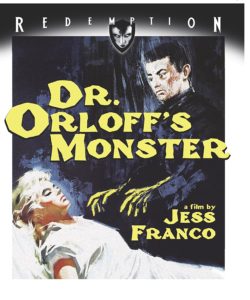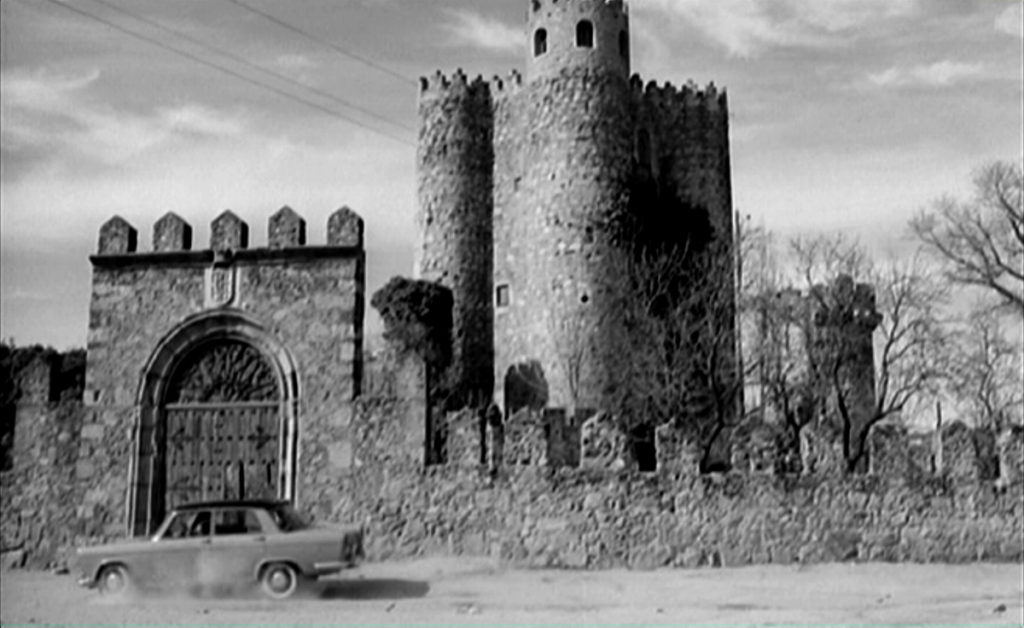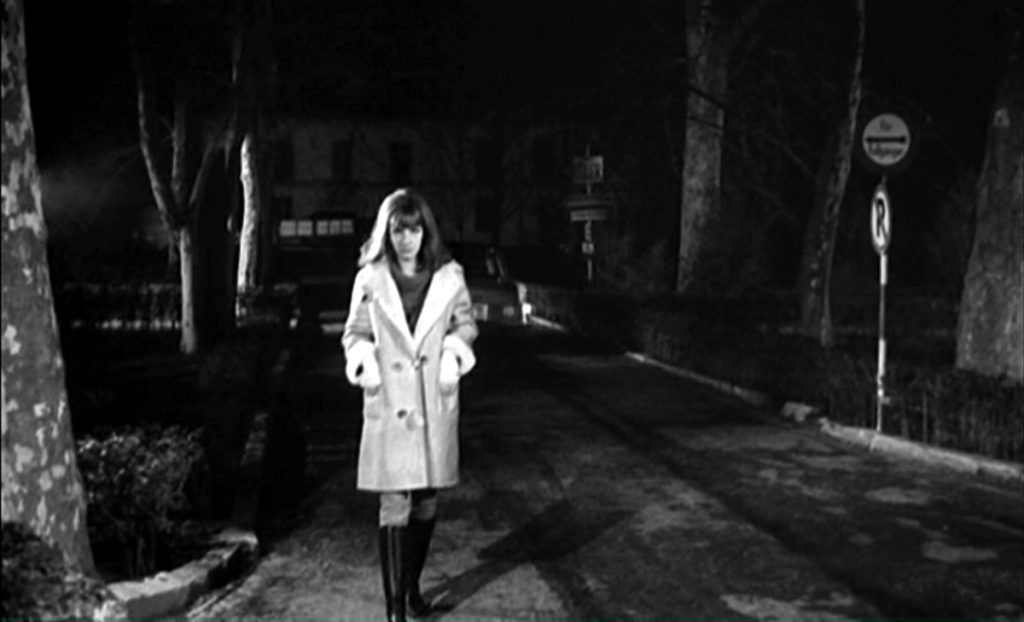Gothic Lumbering Dominates Jess Franco’s Early Fan Favorite
 DIRECTED BY JESS FRANCO/FRENCH/1964
DIRECTED BY JESS FRANCO/FRENCH/1964
STREET DATE: FEBRUARY 7, 2017/REDEMPTION/KINO LORBER
By any name, Spanish filmmaker Jess Franco (aka Jesús Franco, aka Jess Frank, aka Frank Hollmann… the list really does go on) was nothing if not prolific. With a seemingly endless filmography overflowing with sex and horror, it’s not surprising he opted to go by several different names.
Dr. Orloff’s Monster (aka The Mistress of Dr. Jekyll aka El Secreto del Dr. Orloff) made on a shoestring budget in Madrid and released in 1964, is cited as his tenth film, and is considered a very early entry. To put that in perspective, the established iconoclast directors of today Paul Thomas Anderson and Quentin Tarantino have yet to make their own tenth films. (When Tarantino does, he says he’ll retire! More time to catch up on the sprawling Franco back-catalog, then…!)
Don’t come looking for logic; the lurid goings-on and the attractive young lady in the lead will have to do.
Before leering eroticism and lazy filler would overtake Franco’s resume, he seemed to be working towards a straight-forward career. As a devoted film enthusiast, he knew the tropes of both American and British gothic horror to a tee. Along with Sergio Leone and Michael Reeves, Franco falls among the ranks of what could be considered the first film buff film directors. As someone who struggles and is confounded by the likes of Franco’s fandom, there’s something sobering about having to view him that way. It must be said, though, that this film has just enough chops to validate his cred.

Shot in ashen black and white by cinematographer Alfonso Nieva, Dr. Orloff’s Monster maintains an enveloping sense of weighty gothic dread amid the more newfangled moments of jazz, cornball comedy, and Jean-Luc Godard-esque intrusions. Patricide, misogyny, zombie-ism, and annoying prolonged high-pitched frequencies used to control the zombie are all part of the on-screen vagaries. So too is Franco himself, seen cameoing tickling the ivories of a piano as part of a jazz ensemble in a smoky club while a stripper strips. (It is worth noting that actual nudity is minimal to absent in this 1964 movie – something Franco would make up for in spades throughout in his career.)
Don’t come looking for logic; the lurid goings-on and the attractive young lady in the lead will have to do. A supposed sequel to Franco’s career-kickstarting The Awful Dr. Orloff, the film introduces young Melissa (Agnès Spaak) as she arrives to a decrepit old castle to sort out matters of her inheritance. In truth, she is poking around for details relating to her father’s mysterious death. Little does she know that the resident bearded fiend has acquired the secret of reanimating and controlling the dead. Before long, her dearly departed dad is lumbering around as a mindless, glue-faced “robot”, murdering any woman who happens to be wearing a special “receiver” necklace. The film’s horror comes in the form of Melissa’s revelation and subsequent dealing with this madness.

Agnès Spaak as Melissa, who really should know better than to go wandering at this hour in this movie.
Fans will want to pick up this new blu-ray edition, courtesy of Redemption and Kino Lorber. The image quality bears an oddly compelling tactility, with the audio complimenting its appropriately ominous quality. The A/V won’t win any awards, but it most certainly works for the subject matter. The default audio is the French language track, with English subtitles. An English language track is also included. Either way, it’s dubbed.
For those missing the skin factor, there’s an additional eleven minutes of bonus raw footage in which the jazz club stripper actually strips. It’s not a particularly sexy inclusion, perhaps why it was left out of the existing eighty-four minute cut, but here it is, on the sly. There are also two mostly identical trailers for the film, one French, one Italian.
Shot in ashen black and white by cinematographer Alfonso Nieva, Dr. Orloff’s Monster maintains an enveloping sense of weighty gothic dread.
The main attraction in the bonuses though, is the well-researched commentary track by Franco historian Tim Lucas. Lucas’ tracks, pre-scripted and read alone, can run to the dry side of things, and this one is no exception. Yet, as always, his enthusiasm coupled with his deep well of knowledge wins out, making the track a solid beginning-to-end affair – even as he goes out on a limb connecting certain aspects of the film to the then-recent assassination of President Kennedy. Interesting, nonetheless.
Dr. Orloff’s Monster alternates jarringly between snail-paced blah and worthwhile horror mise-en-scène. That said, it is widely considered one of Franco’s best works, still embraced by many as an example of his increasingly rare top tier. For most involved with the production, Dr. Orloff’s Monster is their first credit listed in their IMDb “Known for”s. Such affection for the film is not unjustified in the context of its filmmaker’s vast and questionable career, nor the broader pool of Spanish horror, of which this was a welcome stylistic anomaly back in the day.
By any name, Dr. Orloff’s Monster is one to look out for.
The images in this review are not representative of the actual Blu-ray’s image quality, and are included only to represent the film itself.

